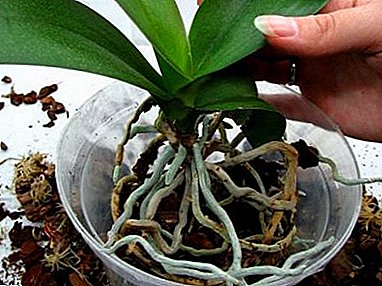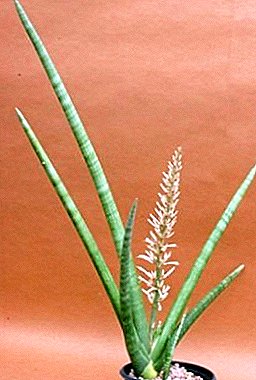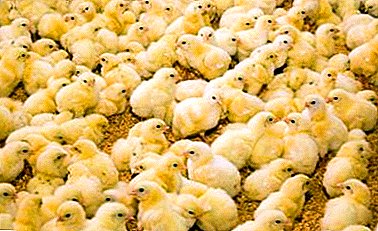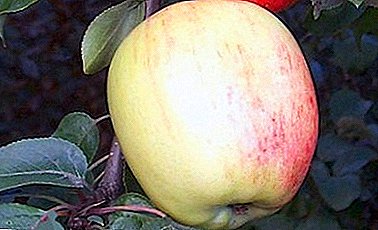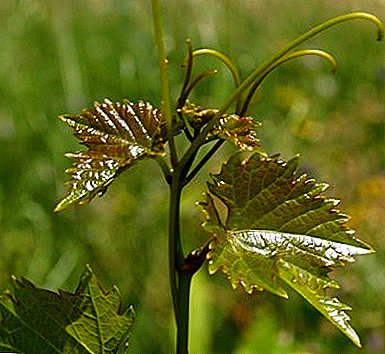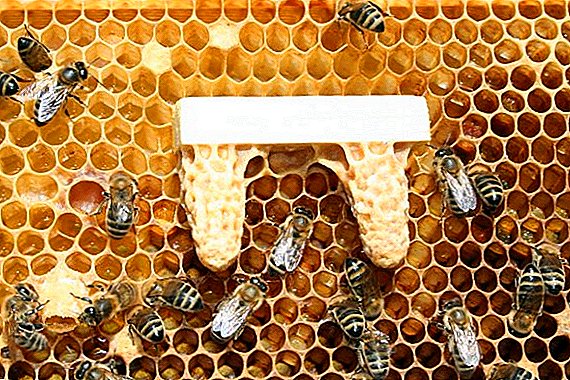 One of the necessary skills in beekeeping is withdrawal of queens. In the science of beekeeping there is a whole branch called matology. Let's take a look at what methods exist for breeding queen bees and which one is easier to master for beginners.
One of the necessary skills in beekeeping is withdrawal of queens. In the science of beekeeping there is a whole branch called matology. Let's take a look at what methods exist for breeding queen bees and which one is easier to master for beginners.
Basic requirements for bee colonies
Consider the process of withdrawal of queues for themselves or for implementation. Before embarking on this difficult work, it is necessary to examine the system that was developed by beekeepers for hatching. The process of breeding queens begins with the selection of families that give birth to them. It is the quality of the parents, that is, the uterus and the drones, that all future signs of the offspring depend. The entire responsibility for the productivity and strength of the families is borne by the young womb, which they put at the head of these families. Thus, the choice should be made among the most powerful, healthy and high-quality. Bee scientists say that the removal of young females can be carried out independently, even in small apiaries.
If you are planning to create an apiary, then get acquainted with the features of beekeeping for beginners.

Be guided by the following criteria:
- the most important for the beekeeper is the honey productivity of the bee family;
- year-round family strength;
- resistance to cold;
- disease resistance and good health.
- check the quality of the honey that the family produces;
- clean and sanitize the hive, feed it, which will stimulate the bees, and thus protect the hive from Nosema;
- give non-crystallized food to bees.
Honey is far from the only value that a person receives due to bees. Beekeeping products such as pollen, bee venom, wax, propolis, podmora, perga, royal jelly and drone milk have also been applied.Before breeding young females in the spring, it is necessary to finally replace the hibernating old queen with new, just born bees. So you will spend the withdrawal of young queens without beekeeping of the bee family. The replacement process ends at the beginning of the last month of spring. The conclusion will bring results earlier if the insects are stimulated by feeding from carbohydrates or proteins.

Important! Also for this purpose it is possible to improve the conditions in which insects live, namely, to insulate the hive and make protection from the wind, you can expose the hive from the wintering place earlier.After you finish replacing the old queens with the young and getting sealed brood, you can form families that will further raise the young mother grubs. Beekeepers say that in such an educational family there should be at least two and a half kilograms of bees, four frames with perga, and also about eleven kilograms of honey.
Drones withdrawal
This process is carried out by beekeepers in the very first days after hives are put out of wintering grounds, because puberty passes for about a month in insects. To bring drones, you need choose one of the best apiary families. 
In such a family, it is necessary to narrow the nest to the minimum possible size, leave the framework in the hive, engaged in breeding (honey, perga). Thus, the queen will not be able to lay eggs in full. Then in the center of the nest put the drone honeycomb. In apiaries where drones and females are systematically removed, special cells with insulators are used on one frame.
Did you know? Bees make honey over 150 million years.The drone weave with the queen should be placed in an insulator, only after he will be in the center of the nest. The uterus will lay eggs 4 days after that, the isolator is transferred to the community nest and a new cell is placed. The family in which the drones are housed must be supplemented with sugar syrup or honey syrup daily.
Important! Periodically it is necessary to strengthen the seven frames with printed bee brood.

Ways of withdrawing queens: a sequence of actions
A beginner beekeeper, before engaging in this process, needs to remember that he requires skill, knowledge and strictly follow the instructions:
- Take the block, separated from the main family of insects by a Hahnemannian grid. Move the frame there with the queen. In this block there should be at least 4 frames, 2 coverts with top dressing, and 2 with open brood. The queen should rest in this framework for a week, after which another 4 frames should be added, filled with brood from other families.
- The resulting insect family will make a large number of queen cells when young bees are freed from the sealed brood. It will happen in 9 days.
- After 5 days after the previous paragraph, you need to set up other families in half with a partition with a Ganeman lattice. For 9 days, use this block as a slice, because at this time the open brood will be sealed.
- Next you need to make for 1 frame insulator. It is necessary for some time to prepare a new sushi from the honeycomb, but it should not be filled with supplements, and move it into this frame. A week later, the queen, who rested, transplanted to the specified empty frame. Put the Ganeman lattice from the edge, leave the empty queen with the queen in the maternal family.
- Many large eggs will be laid on one side, which the rested queen will produce in the next couple of days.
- 4 frames must be delivered from the mother hive to the spare. In such a hive you need to transplant the queen from the detention center. In the honeycomb usually add another 0.5 liters of water and brood with bees.
- Take the honeycomb from the insulator to a room with a high temperature, then cut it into strips. Crush every 2 eggs, leaving only every third. This is done for thinning the mother liquor. Take the special grafting frames, you need to attach the honeycombs pre-cut into strips to their slats. Distribute these frames so that they alternate in the maternal family with the usual frames.
- To grow insects, place three frames of queen cells into half of the previously divided hives. There are no eggs in them, since the queen of insects in them is placed behind the partition. A graft box should be placed in each half of the hives. Next, a family of insects will grow mothers, and bring them enough royal jelly. Do not forget to leave one of the vaccination frames in the maternal family.
- At the end you should be placed in the empty beehives. Take them out to the terrain eleven days after the queen is placed in an isolation ward. Attach to each cell layout, and to the last - sealed queen cells. Place the parent families on two layouts. Leave the queen cells in the layouts as a spare material.

Everyone knows that honey is very tasty and healthy delicacy. Read about its most famous varieties: coriander, chestnut, buckwheat, hawthorn, espartsetovy, rapeseed, cypress, May, sweet, white, acacia, lime and phacelia.
Natural methods
- Natural breeding bees - This is the easiest way of breeding queen bees, granted by nature. It is necessary for the insect family to turn into a swarm. If you create the most comfortable conditions for swarming in the hive, this process will be greatly accelerated. Three frames with brood should be placed in the hive, the tap hole should be covered, and there should be no non-split framework. After that, wait until the queen cells are laid, and form new layers on them and new frames. The laying of queen cells cannot be correctly predicted, which is a clear disadvantage of this method. On the quality of queen mothers, too, can not speak.
- Another natural way are fistula beemaps. The main plus is insect withdrawal at the right time. This method is currently very popular among beekeepers. Insects must be forced to postpone fistula queen cells. Choose a strong family, find a uterus in it and transfer it and two frames with brood to a new hive. Shake the bees into it with several frames. You will get a ready-made layering to be placed in a permanent hive. Bees without a queen from an old hive should postpone fistulous queen cells, however you should also make sure that they are only on mature larvae (or cut them off). The quality of the queens obtained is better than in the previous method.

Did you know? In order to get one spoon of honey, you need 200 bees to work the whole day.
Artificial inference
Artificial breeding of queen bees presented in two simple ways.
- From the strongest family, take a frame with young brood and eggs. Cut the top hole 3 by 4 centimeters. Remove all the lower walls of the slice and leave 2 larvae. Put the frame in the nest of an arrayless family, after a few days you can check the tab of the queen cells. Start cutting fistulous queen cells when the bees have laid the right amount. If you do not find queen cells, then there is a womb in the hive, which is not all right. You will get quality material with this method, but use an insect withdrawal calendar.
- The second method is used if they want to get 5-10 insects at the same time. In a strong family, place the queen in a two-frame insulator. Put here a frame with ripe brood and a frame with cells for laying. Close the design with the frames from the top side, the queens will not be able to escape. Put the isolator back into the family between the brood and the framework. Begin to form a nucleus, which consists of three frames (with sushi, honey and brood from an insulator), in a few days. Next, add there individuals from several frames, place the uterus from the insulator. Take the frame with fresh brood into the house, cut the lower boundary of the beginning of the appearance of the larvae. After that, you have the opportunity to put the frame back to the family, from where they took the queen. After a few days it remains to check the tab and remove all fistulous queen cells. A couple of days before the royals appear, cut the queen cells, then put them back to ripen. Place on the nuclei of maternal individuals after the release.
Read the description of the breed of bees and the differences between them.

Remaining methods
The most used and simplest methods of withdrawal of the queen bee we described. They are the most popular among the bulk of beekeepers. All the rest one way or another based on these methods. Newer methods have not yet been worked out practically, therefore, they are not recommended for beginner beekeepers to use. 
The main conditions for the withdrawal of queens
For effective withdrawal of queens at home you need follow certain rules and create the necessary prerequisites for insects.
- If you want to get a good queen for breeding, buy it only from famous beekeepers or well-established breeding apiaries.
- Before reproduction, the uterus should be allowed to rest for a week, removing it from the active bees. After resting, the uterus may produce larger eggs.
- In the queen cells laid on the grafting frames, it is necessary to maintain a temperature of 32 ° C and a humidity of at least 75-90%. Use the Aerothermostat to output queens.
- Evenly distribute the queen cells between different bee colonies in order to grow and fill them with royal jelly. This process of growing is recommended to carry out in half of the hives, which then will be layering.
Uterine breeding calendar

Having chosen a certain method and creating the necessary conditions, even a novice beekeeper will be able to remove the uterus independently and at minimal cost. Also, thanks to the uterine output calendar, you can follow what and when you need to do so as not to disturb the progress of the withdrawal.


